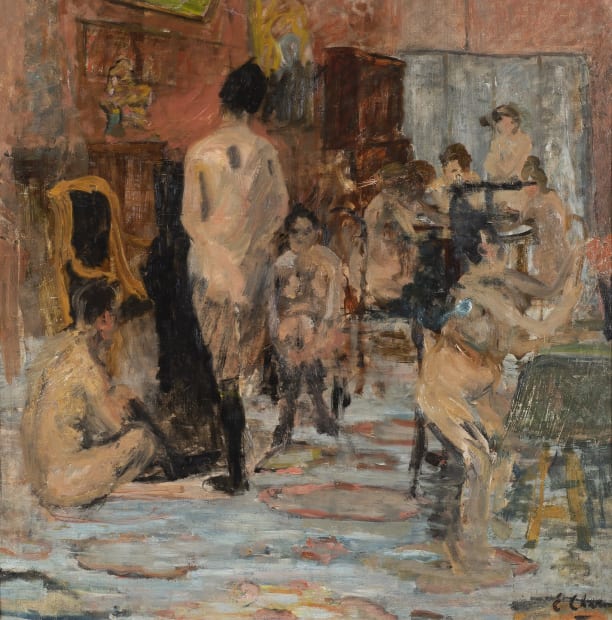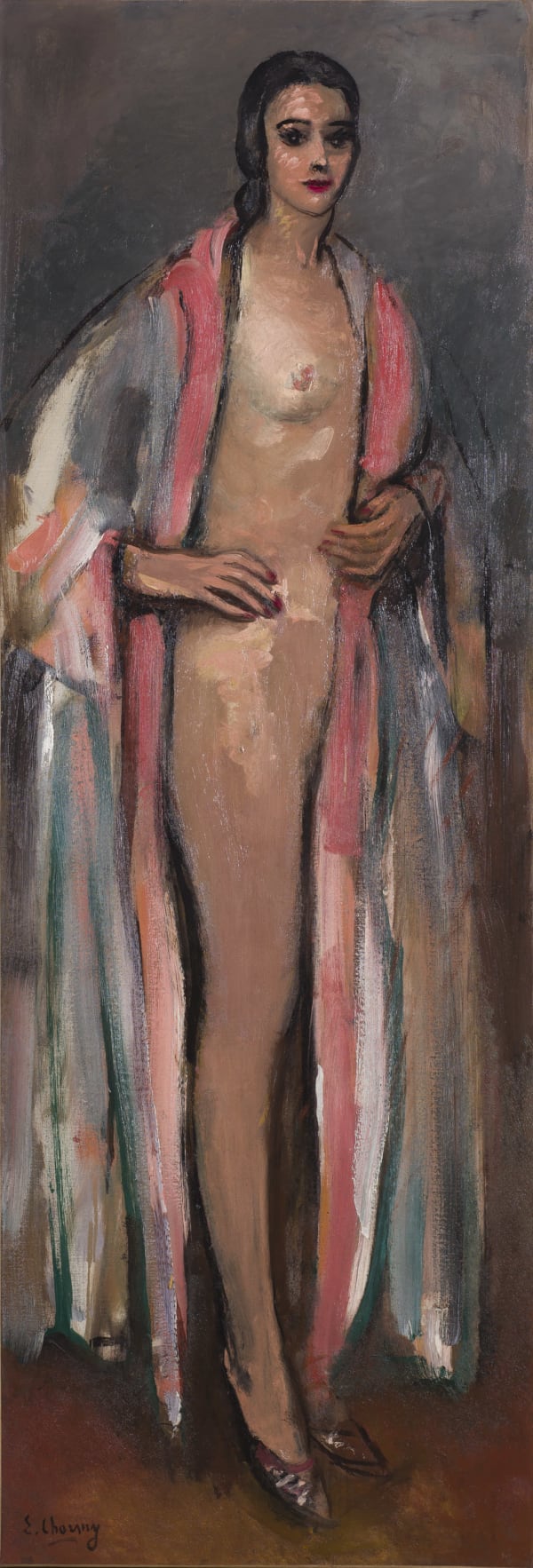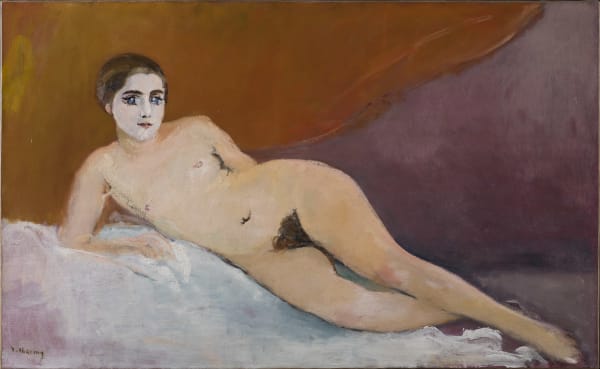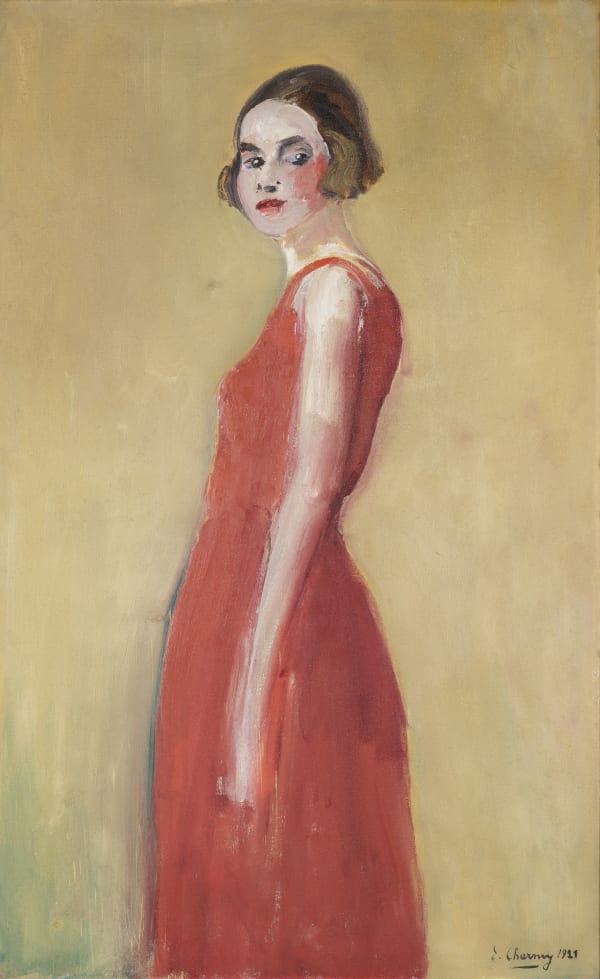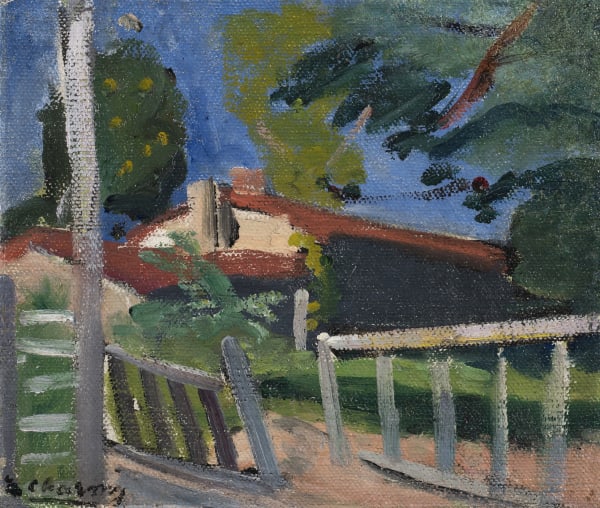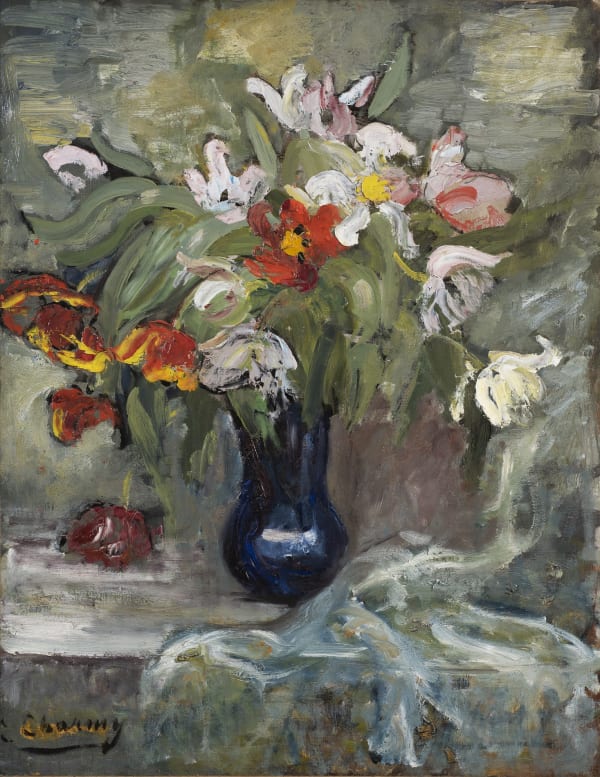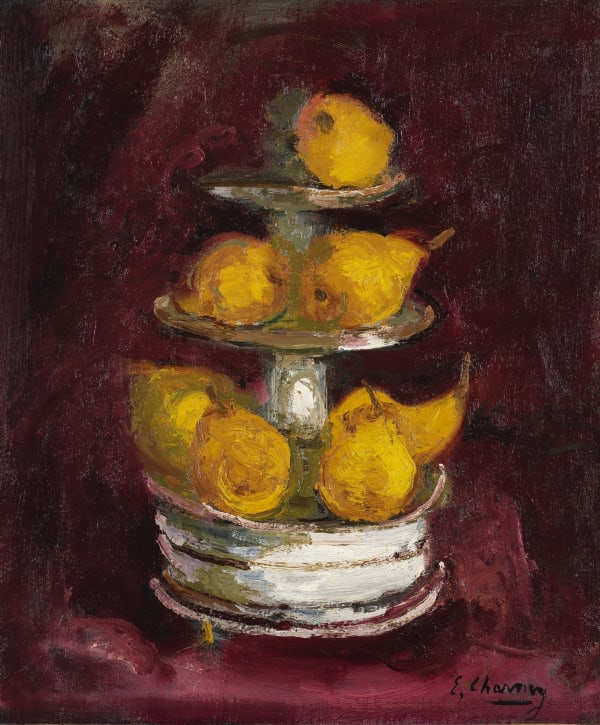-

Émilie Charmy in her Saint-Cloud studio, 1906
-
-
Born Émilie Espérance Barret on 2 April 1878 in Saint-Étienne, she adopted the surname Charmy upon moving to Lyon in 1989 where she studied painting under Jacques Martin.
In 1903 she moved to Paris, the then epicentre of modernist painting. Charmy began to experiment with fauvism and what would be her most daring subject matter – the female nude. She joined the circle of Matisse, Marquet and Camoin, with the latter becoming her lover.
Within a year she was exhibiting at the Salon des Indépendants and came to be at the forefront of Parisian modernism. In the seminal 1905 Salon d’Automne, in which fauvism coined its name, her work caught the eye of Berthe Weill, a champion of female artists, and whose gallery was the first to sell Picasso’s work in Paris. As her reputation grew Charmy exhibited internationally, including at The Armory Show of 1913 alongside Manguin, Rouault, Matisse and Camoin.
After World War II Charmy never regained the recognition she enjoyed prior to the War. She died in 1974 at the age of 96. However, in 2008, Musée de Villefranche-sur-Saône held a retrospective of her work and an exhibition at the Fralin Museum of Art followed in 2014. Charmy’s works can now be found in Musée de Grenoble, Musée des Beaux-Arts de Lyon and the Art Institute of Chicago.
-

Emilie Charmy, La Loge , 1900
-

Charmy, Fleurs et Fruits, oil on canvas, c. 1904
-
-
 Émilie CharmyNu au escarpins verts, c. 1930Oil on canvas38 1/4 x 77 1/8 in, 97 x 196 cmSigned 'E. Charmy' lower rightSold
Émilie CharmyNu au escarpins verts, c. 1930Oil on canvas38 1/4 x 77 1/8 in, 97 x 196 cmSigned 'E. Charmy' lower rightSold -
 Émilie CharmyGrand nu debout, 1918-20Oil on canvas55 15/16 x 19 1/16 in, 142 x 48.5 cmSigned 'E Charmy' lower leftSold
Émilie CharmyGrand nu debout, 1918-20Oil on canvas55 15/16 x 19 1/16 in, 142 x 48.5 cmSigned 'E Charmy' lower leftSold -
 Émilie Charmy, Femme allongée, c. 1920
Émilie Charmy, Femme allongée, c. 1920 -
 Émilie CharmyAutoportrait, 1910-1912Oil on canvas22 1/8 x 18 1/8 in, 56 x 46 cmSigned 'E Charmy' lower rightSold
Émilie CharmyAutoportrait, 1910-1912Oil on canvas22 1/8 x 18 1/8 in, 56 x 46 cmSigned 'E Charmy' lower rightSold
-
-

Charles Camoin, Artist in Her Studio, 1905, Oil on canvas, 73.03 × 60.33 cm © Dallas Museum of Art
-
Marnat, 1913-15
-
-
 Émilie Charmy, Marnat, 1913-15
Émilie Charmy, Marnat, 1913-15 -
 Émilie Charmy, La barriere à Marnat, c. 1915
Émilie Charmy, La barriere à Marnat, c. 1915 -
 Émilie CharmyLe chemin vers la maison, c. 1913-15Oil on canvas30 3/4 x 22 7/8 in, 78 x 58 cmSigned 'E. Charmy' lower leftSold
Émilie CharmyLe chemin vers la maison, c. 1913-15Oil on canvas30 3/4 x 22 7/8 in, 78 x 58 cmSigned 'E. Charmy' lower leftSold -
 Émilie CharmyLes toits rouges, c. 1912-16Oil on canvas laid down on board16 1/2 x 20 1/8 in, 42 x 51 cmSigned 'E Charmy' lower rightSold
Émilie CharmyLes toits rouges, c. 1912-16Oil on canvas laid down on board16 1/2 x 20 1/8 in, 42 x 51 cmSigned 'E Charmy' lower rightSold
-
-
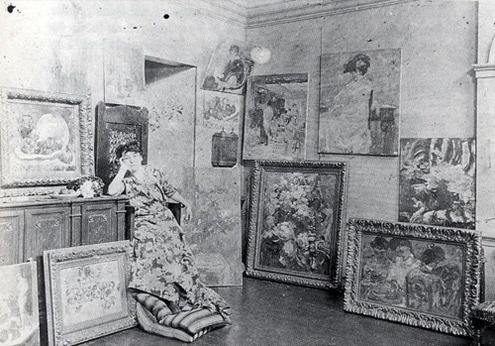
Émilie Charmy in her studio, Saint-Cloud c.1906

Émilie Charmy with her brother, Jean, in 1906
-
-
 Émilie CharmyFleurs et Fruits, c. 1904Oil on canvas28 11/16 x 21 1/4 in, 72.8 x 54 cmSigned 'E Charmy' lower leftSold
Émilie CharmyFleurs et Fruits, c. 1904Oil on canvas28 11/16 x 21 1/4 in, 72.8 x 54 cmSigned 'E Charmy' lower leftSold -
 Émilie Charmy, Vase de fleurs , 1925
Émilie Charmy, Vase de fleurs , 1925 -
 Émilie Charmy, Bouquet de Fleurs, 1902-04
Émilie Charmy, Bouquet de Fleurs, 1902-04 -
 Émilie CharmyRoses, c. 1912-14Oil on canvas18 1/4 x 15 1/8 in, 46.5 x 38.5 cmSigned 'E Charmy' lower rightSold
Émilie CharmyRoses, c. 1912-14Oil on canvas18 1/4 x 15 1/8 in, 46.5 x 38.5 cmSigned 'E Charmy' lower rightSold
Atelier E. Charmy stamp verso
-
-
* All prices are subject to an additional 5% import duty charge if they are to remain within the UK.


